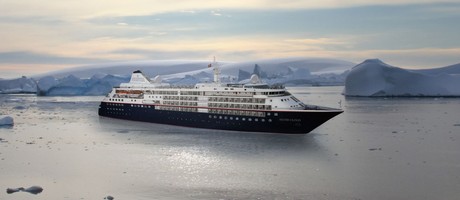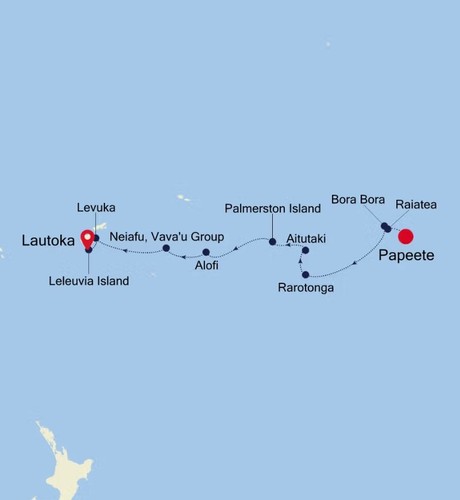15 Days Polynesia Luxury Cruise - Papeete to Lautoka
Experience the ethereal beauty of the South Pacific, journeying from the sapphire-blue lagoons of French Polynesia's white-sand beaches to precious Pacific jewels like Leleuvia. Our island-hopping adventure takes us to Tonga, the Cook Islands, and stunning Niue - with each stop revealing more blissful beaches and lush landscapes peppered with drooping mango trees. Savour the fresh taste of coconut water and immerse yourself in stunning seascapes.
Highlights
• Explore the turquoise lagoons and lush landscapes of Bora Bora, French Polynesia.
• Relax on the pristine beaches of Aitutaki in the Cook Islands.
• Immerse yourself in the unique charm of Alofi, Niue, surrounded by stunning seascapes.
Pre Cruise Benefits
Private Executive Transfers
International flights - Economy class
or Business Class upgrade
Airport transfers
Hotel
Papeete is the center of the tropical paradise of French Polynesia, where islands fringed with gorgeous beaches and turquoise ocean await to soothe the soul. This spirited city is the capital of French Polynesia, and serves as a superb base for onward exploration of Tahiti – an island of breathtaking landscapes and oceanic vistas. A wonderful lagoon of crisp, clear water begs to be snorkelled, stunning black beaches and blowholes pay tribute to the island's volcanic heritage, and lush green mountains beckon you inland on adventures, as you explore extraordinary Tahiti. Visit to relax and settle into the intoxicating rhythm of life in this Polynesian paradise.
Known as the "Sacred Island," Raiatea is a fascinating haunt for archaeologists and historians as it's one of the islands in the Pacific where Polynesian culture can trace its roots. Visitors will find many of the older Polynesian structures still in place and are fascinating places to explore. In the 16th century, Raiatea developed a powerful cult dedicated to Oro the God of War and built a large meeting ground, the Taputaputea Marae, which is still intact. Human sacrifice was practiced until around the middle of the 18th century and visitors should look for the sacrificial stone. Several tour operators run visits to the marae (ancient temples) along with some degree of informed commentary—although in fairness Polynesian storytelling can embellish things a little. The Faaroa River is the only navigable waterway in French Polynesia and it can be traveled by powerboat or outrigger canoe. Running through the Faaroa Gorge it passes some spectacular scenery with steep-walled jungle foliage holding dozens of bird species and wild hibiscus. Trekking up Mount Temehani, a well-known landmark that's said to be Oro's birthplace, is relatively demanding. Keep a lookout for the rare, five-petal tiare apetahi. Said to be impossible to grow anywhere else, this white, indigenous flower can only be found above 1,300 feet (396 meters). Look, but don't touch. It's against the law to pick them.
If you have ever dreamt up your ideal island holiday, we suspect it goes something like this: Soapy blue seas? Check. Sparkling white beaches? Check. Thatched wooden huts, gently sloping palm trees and kaleidoscopic marine life? Check, check and check. And yet, even by ticking every box, first time viewing of Bora Bora still beggars belief. This tropical hideaway less than 12 m2 in the heart of the South Pacific has been toping travel wish lists for years. Long considered the realm of honeymooners – spectacularly romantic sunsets are a speciality – Bora Bora is not just for wandering with your love. If the prismatic shades of blue of the world’s most beautiful lagoon do not fill you up, then perhaps underwater scooters and aqua Safaris will charge your batteries. If exploring Bora Bora’s lush hinterland is more your glass of tequila sunrise, then trips around the island (often stopping off at the celebrity haunt Bloody Mary Restaurant & Bar) are a must. Bora Bora’s peaceful ambience has not always been the case. The island was a US supply base, known as “Operation Bobcat” during WWII. During this time, Bora Bora was home to nine ships, 20,000 tons of equipment and nearly 7,000 men. Eight massive 7-inch naval cannons were installed around the island, all but one of which is still in place. Although little is known of the history of the island, it is known that Bora Bora was called Vava’u in ancient times. This supports belief that the island was colonised by Tongans prior to French annex in 1888.
Days at sea are the perfect opportunity to relax, unwind and catch up with what you’ve been meaning to do. So whether that is going to the gym, visiting the spa, whale watching, catching up on your reading or simply topping up your tan, these blue sea days are the perfect balance to busy days spent exploring shore side.
Rarotonga is the essence of Polynesia with its warmth, vibrant tropical plants and some of the happiest and friendliest people on Earth. As the main island of the Cook Islands, Rarotonga supports most of the country’s people and services. The island was settled about 1500 years ago by traditional sailing canoes as part of the great Polynesian expansion. Cook Islanders are proud of their culture and happy to demonstrate their traditional skills. Mesmerising dances incorporate energetic posturing of warrior men and seductive gyrations of grass skirts on the hips of women, along with graceful hand movements. An ancient eroded volcano bedecked in rainforest dominates the island. Skirting the mountain is a flat coastal strip where most people live. The island is fringed by white coral sand beaches and a shallow coastal lagoon stretching to a protective outer ring of coral reefs. Rarotonga has many modern water and land activities for visitors, but without the tourism hype of more well-known Pacific islands. An easy escape from is to trek across the island’s interior past the Needle—an aptly named volcanic rock spire. The decaying volcano on Rarotonga produces fertile soil and captures rain, ensuring lush dark green vegetation. Bird life is headlined by the Cook Islands Fruit Dove, and the Kakerori (Rarotongan Flycatcher). Kakerori were critically endangered with only 29 birds in the Takitumu Conservation Area in 1989. A dedicated conservation program has enabled a recovery of over 500 birds.
When Lonely Planet co-founder describes somewhere as “the world’s most beautiful island” you can be sure that you are in for a treat. Incredible Aitutaki, inspiring Aitutaki, unbelievable, idyllic and unimaginable, there are simply not enough superlatives to describe quite how amazing Aitutaki is. Brought to light in 1779 by Captain Bligh, the Mutiny on the Bounty meant that Aitutaki has something of a bloodthirsty history. While Europeans missionaries eventually settled on the island in the 19th century (evidenced by the white, coral-encrusted walls of the many churches) the island’s Polynesian history dates to around 900AD. Traditional songs and dances from this period still exist (although Christian hymns, known as “imene metua” are also popular), and are performed by islanders with gusto and much pride. The island is part of the Cook Islands, one of the most secluded and romantic archipelagos in the world. With its powder white sand, warm turquoise waters and sense of casual luxury, it is easy to see why the island has earnt itself the moniker of honeymooner’s island. However, there is much more to Aitutaki than just fun in the sun. With a reef that completely encompasses a large turquoise lagoon, Aitutaki is considered one of the most spectacular diving and snorkelling destinations in the world. Added to the tropical excitement is that when entering the main village via Zodiac along a narrow channel – travellers will be greeted by a traditional and customary warrior challenge.
The low-lying atoll of Palmerston is inhabited by three families, all descendants of William Marsters (1831-1899). Members of the community are known to greet visitors and guide small boats and Zodiacs into the lagoon through a maze of coral reef to reach the only inhabited islet –commonly called “Home”. Once ashore, the whole community generally turns out to meet visitors as it is a rare occurrence. The island’s highlights include a church, the oldest house, the cemetery, the school, the underground gardens and “Duke’s Pool,” inviting for a swim or snorkel. In the lagoon’s waters it is possible to find colorful reef-fish, sea cucumbers, rays, and sea turtles. Overhead there is birdlife including tropicbirds, boobies, noddies, frigatebirds and terns.
Days at sea are the perfect opportunity to relax, unwind and catch up with what you’ve been meaning to do. So whether that is going to the gym, visiting the spa, whale watching, catching up on your reading or simply topping up your tan, these blue sea days are the perfect balance to busy days spent exploring shore side.
Alofi, the capital of Niue island, or “The Rock” as it is known to its inhabitants. The island has a population of only around 600 inhabitants, giving it the modest title of being the second smallest capital “city” in the world. The island does boast an international airport but despite this, tourism is not as rife here as in some of the other, better known Polynesian idylls. Niue has a distinctive beauty all of its own. Think less of the sweeping, romantic beaches for which Polynesia is famous and more sheltered rocky coves, jewel-like reef pools, headlands, tropical forest, coconut plantations and neat, colourful villages scattered throughout the island’s 100 sq.m. The crystal clear waters and limestone caves of beautiful Alofi Bay offer spectacular snorkelling opportunities. The island is sometimes referred to as its ancient name of Savage Island. Niueans’ nature of worship was in the past joyful and ecstatic. Islanders would receive the power of the divine by dancing around a campfire. These ceremonies, called tugi e mama (lighting the fires) were especially used before going to war, when a priest or shaman would light a fire and call out to the gods to come to the aid of the troops who were about to enter in battle. As one of Polynesia’s poorer islands, today Niue has no organised religion, although islanders are incredibly spiritual. Thus, there are no real places of worship but rather areas of land – known as taugas - marked out and reserved solely for the breeding of birds and crabs.
Planet Earth is divided into 24 different time zones and regardless of where you are on the planet, the time and date always changes at midnight. So, for those who travel westwards, time moves seemingly “slower” over the time zones gaining one hour per time zone crossed, but you suddenly find yourself one day older when crossing the date line from the Western to the Eastern Hemisphere since you have to adjust for the time “gained”! Just to confuse matters even further, the IDL (International Date Line) is arbitrary, and countries can request to move it as they please! For two hours of every day (between 10 am and 12 pm GMT), the world has three different dates, meaning that when it is 11.30 pm on Sunday in American Samoa (GMT-11), it will be 6.30 am on Monday in New York City (GMT-4) and 12.30 am on Tuesday in Kiritimati, Line Islands (GMT+14)!
With a population of 6,000, Neiafu is the capital of the Vava’u Group and the second largest municipality in the Polynesian nation of Tonga (a 169-island archipelago in the South Pacific). The city is situated next to a deep- water harbor (Port of Refuge) on the south coast of Vava’u, the main island of the Vava’u archipelago in northern Tonga. The waters of this region are known for their clarity and beauty, and the area attracts many humpback whales between June and November. A popular destination in Neiafu is the ‘Ene’io Botanical Garden, a bird sanctuary that promotes the survival of exotic and native bird species as well as supports and conserves a diverse array of plant life.
Days at sea are the perfect opportunity to relax, unwind and catch up with what you’ve been meaning to do. So whether that is going to the gym, visiting the spa, whale watching, catching up on your reading or simply topping up your tan, these blue sea days are the perfect balance to busy days spent exploring shore side.
Leleuvia is a small low-lying island southeast of Ovalau with a length of barely 500 meters. Situated between the chiefly island of Bau, Moturiki and Ovalau, almost equidistant from Ovalau and the Central Eastern coast of Viti Levu, this lush, green island hosts a small resort. An easily accessible reef with many colorful reef fish 10 meters off of Leleuvia’s western beach invites to be explored. Resident sea kraits are often seen resting ashore north of the small pier. Despite its small size and the resort on its southern side, the island still has quite an extensive forest of tamanu (Alexandrian laurel), lantern trees, fish-poison trees and beach gardenia. There are also local clusters of beach hibiscus, beach heliotrope and Pacific rosewood where Sacred Kingfishers, Orange-breasted Honeyeaters, and Pacific Swallows have been recorded.
It doesn’t get much sweeter than arriving on the sun-soaked shores of the Sugar City. Fiji’s second-biggest settlement opens up a world of blissful beaches and turquoise seascapes, while its dense jungle lures the adventurous deep into its embrace. Step ashore where the first Fijians landed, and you'll understand instantly why they chose to make this island paradise their heavenly home. Experience rich Fijian life, and see dramatic displays like warrior dances, and remarkable local practices like firewalks, which kick up burning embers into the night's sky. Legend says the city took its name after two chiefs faced each other in a duel. A spear pierced one of the chiefs, leading to the shout of 'lau-toka!' or 'spear hit!' Sugar is Lautoka’s main trade, but its botanical gardens are a sweet insight into the tropical plant life that thrives here - from pearl white lilies to tall, fragrant orchids. Explore temples, charming cafes and mills - or barter for some of the juiciest mangoes you’ll ever taste at the city’s lively market. You'll only be able to resist the beaches for so long, and it doesn’t get much more stunning than the Blue Lagoon - a heavenly blend of woven together turquoise shades. Remote, wild and unspoiled, these are some of the best tropical beaches in the world. There's more rejuvenating relaxation at the mineral-rich mud pools and spas, fuelled by the volcanic activity below. Savala Island is a teardrop of sand offshore, and another beautiful place to wander with the soft powder between your toes - along sandy spits that peter out into the water. Or swim and snorkel among its envied reefs, thronging with fish life.
Post Cruise Benefits
Airport transfers
International flights - Economy class
or Business Class upgrade
Private Executive Transfers
Itineraries are subject to change.
|
Book now |
Vista
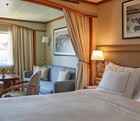
Veranda

Midship Veranda
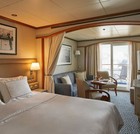
Medallion
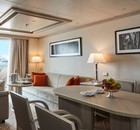
Silver
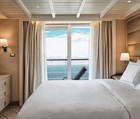
Royal 1 Bedroom
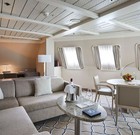
Grand 1 Bedroom
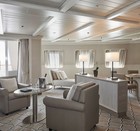
Owner 1 Bedroom
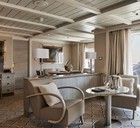
Royal 2 Bedroom

Grand 2 Bedroom

Owner 2 Bedroom

|
Book now |
Vista

Veranda

Midship Veranda

Medallion

Silver

Royal 1 Bedroom

Grand 1 Bedroom

Owner 1 Bedroom

Royal 2 Bedroom

Grand 2 Bedroom

Owner 2 Bedroom

Vessel Type: Luxury Expedition
Length: 157 m
Passenger Capacity: 200/260
Built: 1994 Refurbished & Rebranded: 2017
After extensive refurbishment, Silver Cloud will be the most spacious and comfortable ice class vessel in expedition cruising. Her large suites, her destination itineraries and her unparalleled service make her truly special. Her five dining options will tantalise your taste buds and as 80% of her suites include a veranda, watching a breaching whale or a few cavorting penguins has never been so personal. Broad sweeping decks with multiple open spaces and a swimming pool complete what is surely the most distinctive expedition ship sailing today.
A limited number of guests, particularly with just 200 in polar waters, mean that Silver Cloud has the highest space to guest and crew to guest ratios in expedition cruising. With her 18 zodiacs, possibilities are almost limitless with ship-wide simultaneous explorations. Finally, a team of 19 passionate and dedicated experts are always at hand to ensure your voyage is enhanced every step of the way.
DECK 09 - Observation Lounge, Jogging Track
DECK 08 - Pool, Pool Bar, Hot Rocks, The Panorama Lounge, The Connoisseur’s Corner
DECK 07 - La Terrazza, The Spa at Silversea, Beauty Salon, The Library
DECK 06 - Lecture Theatre, The Fitness Centre, Reception/Guest Relations, Expedition Desk
DECK 05 - The Bar, Boutique, Casino
DECK 04 - Main Restaurant, Le Champagne, Launderette







Inclusions
Port-to-Port Service:
• Suite accommodations,
• Butler service in any suite,
• Unlimited Wi-Fi,
• Onboard meals and entertainment,
• 24-hour dining service,
• Beverages aboard ship including select wines,
• Champagnes, spirits, soft drinks, water, tea and coffee,
• Gratuities aboard ship (except spa).
______________
• Pre Cruise Benefits - Private Executive Transfers, International flights - Economy class or Business Class upgrade, Airport transfers, Hotel
• Post Cruise Benefits - Airport transfers, International flights - Economy class or Business Class upgrade, Private Executive Transfers
Exclusions
• International flights unless otherwise stated
• Passport and visa costs if applicable
• Travel insurance
• Optional shore excursions
• Spa and Salon Treatments
• Complete valet services, including laundry, pressing and dry cleaning, are available at an additional charge
Our Associates Include












